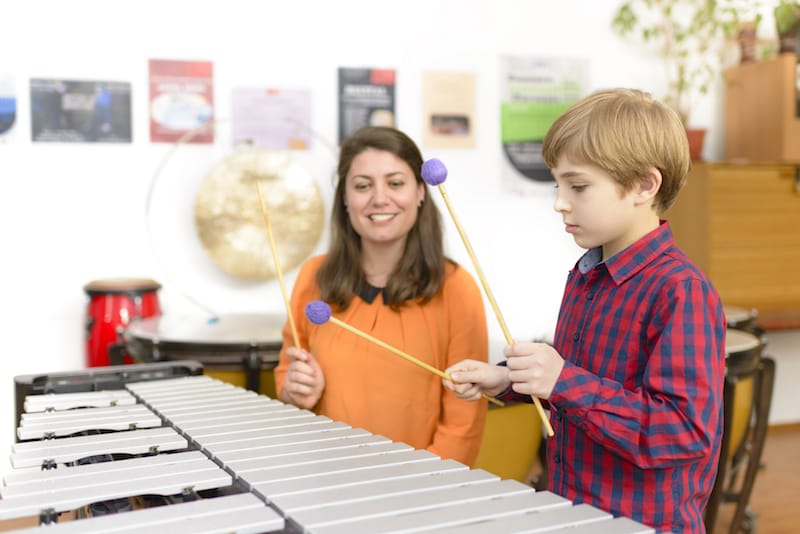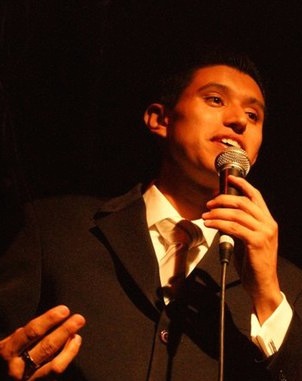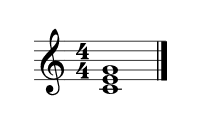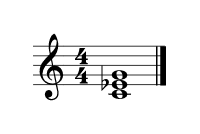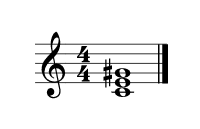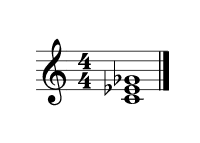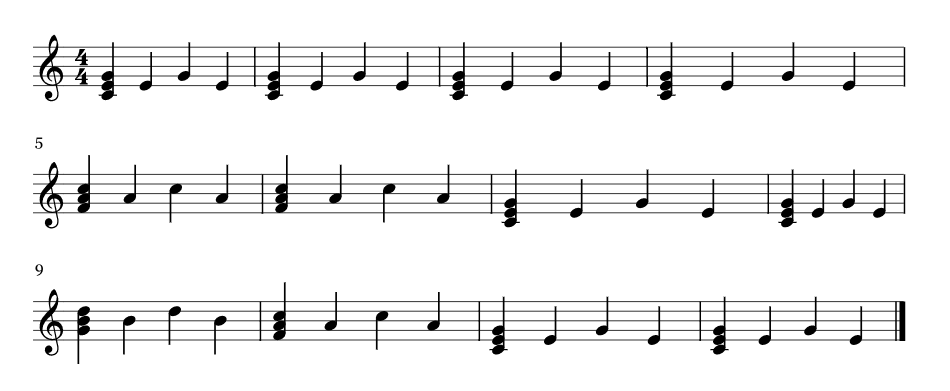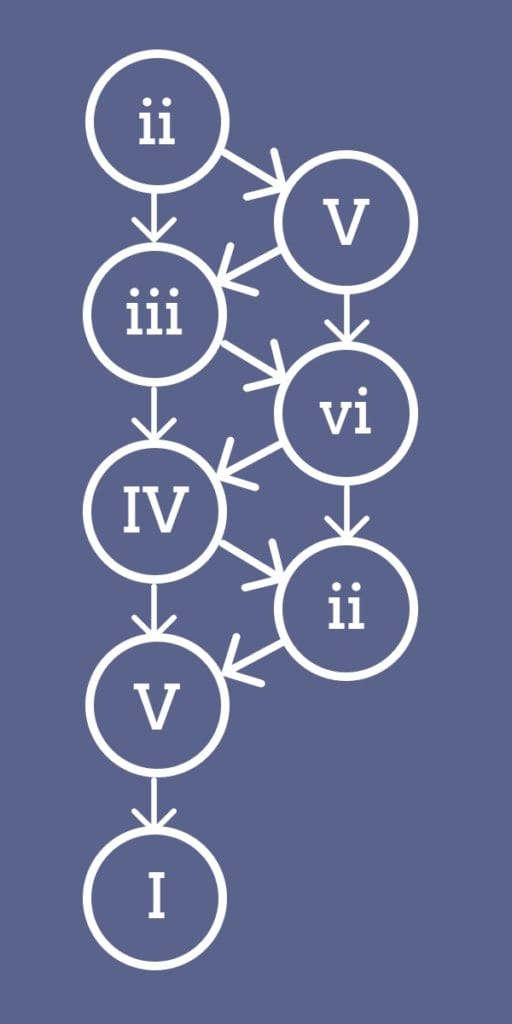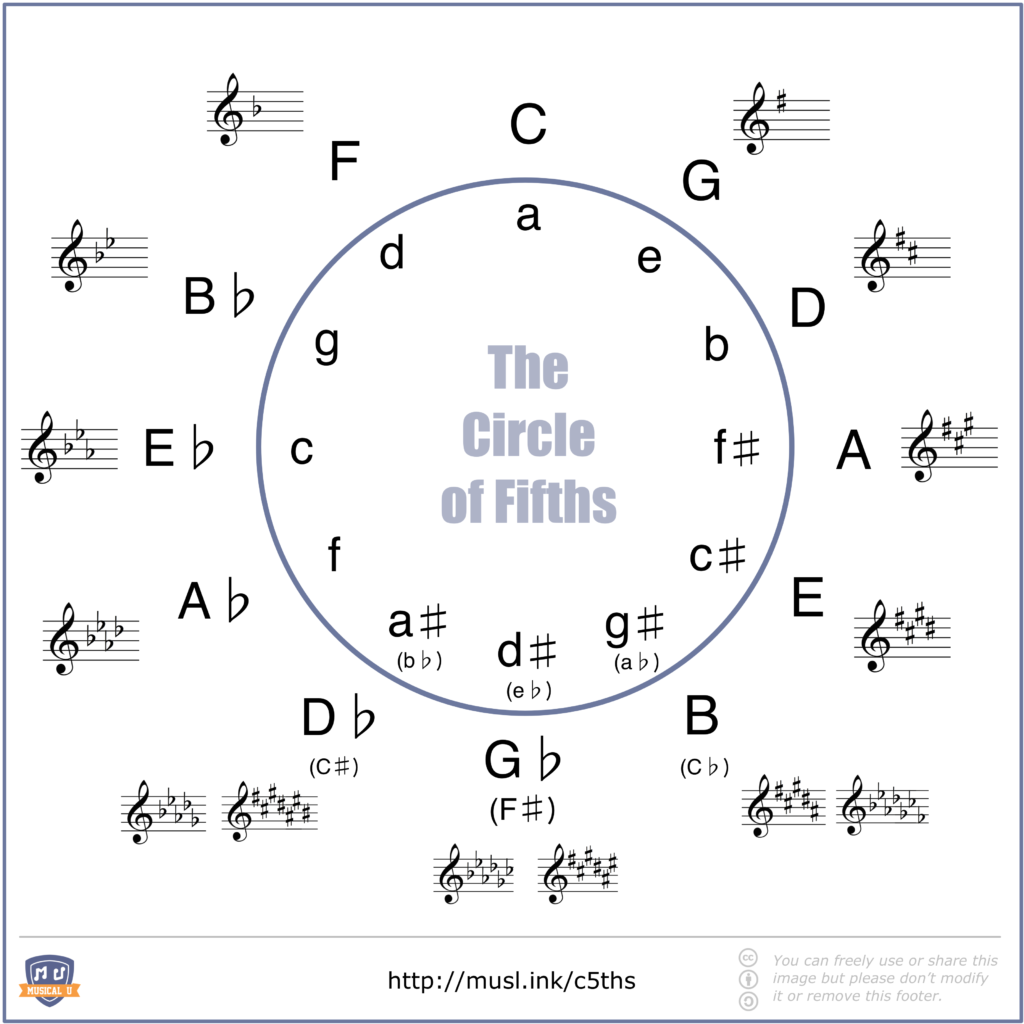Today we’re speaking with Judy Rodman of judyrodman.com and the All Things Vocal blog. Judy went from being a professional jingle singer in the 70s to getting a recording contract as a singer and having a Billboard #1 song, to writing songs and having one of them become a #1 hit for Leann Rimes, to now being an in-demand vocal coach in Nashville and the creator of the All Things Vocal blog and podcast.
With that incredible career, it would be easy to assume Judy has a gift, or that she relied on natural talent. But as you’ll learn in this conversation, it wasn’t smooth sailing and it was a particular mindset that allowed Judy to have such success in so many different arenas in music. It’s also abundantly clear from this conversation that Judy has soaked up an incredible amount of learning along the way and excels in sharing that expertise in a clear and valuable way for her students.
In this conversation we talk about:
- What it was that let her succeed again and again as she pivoted her music career through the years
- The two areas she recommends beginning singers to focus on and specific exercises to help with both
- The number one most important thing to focus on as a singer if you want to improve and have a good-sounding voice
- How studio singing differs from singing on stage
- A clever device that can help you past that feeling of thinking you sound odd or bad when you hear yourself on a recording
There is a ton packed into this conversation and whether you’ve never sung before, you sing and want to get better, or you’re already performing on stage and in the studio, there is going to be something valuable for you to take away, and we know you’re going to want to immerse yourself more in everything Judy offers to help singers.
Listen to the episode:
Links and Resources
Enjoying The Musicality Podcast? Please support the show by rating and reviewing it!
Rate and Review!
Transcript
Christopher: Welcome to the show, Judy. Thank you for joining us today.
Judy: Thank you for the invitation to join you. What a fascinating podcast you have.
Christopher: Thank you very much. You have had an incredible career and I feel almost sheepish asking you to tell us about it because there is so much to talk about, but if you wouldn’t mind, could you tell us a bit about how you got started in music and what those early year experiences were like for you?
Judy: Well, at this point, I’ve been singing, you know, professionally for, like, 50 years and I started singing when I was a small child and I started singing with my family. My father was an air traffic controller and we just had jam sessions. So I learned to sing harmony within those jam sessions and all that and, you know, I lived in Miami for awhile — I lived in a bunch of different places, but when we moved to Jacksonville I was gonna be a research scientist, of all things in Miami and the trajectory got sort of changed when we moved to Jacksonville because those educational opportunities did not exist.
So I went for my other passion, which was music. You know, I had always been a musician, you know, played guitar, played piano and singing and I ended up, long story short, my choir director was — got involved in doing jingles so he asked me to join with him and his wife and I sang my first national jingle at 17. So it was for Gino’s Pizza Logs, of all things. And then after that I eventually moved to Memphis with my family and got a full-time job as a jingles singer, as a staff singer in a jingle company which meant I sang from 8:30 in the morning ’til 3:30 in the afternoon five days a week, sometimes six, and at the same time I started doing background vocals in some of the studios in Memphis with a couple of the people that I sang jingles with and I was in a pop Top 40 group where I met my to-be husband. And so I learned. You know, I had no idea of all of the stuff I was learning but I was learning so much that would come in handy later, you know, including how to dissect songs and how to sing with surgical precision with jingles and all that.
So I eventually had a child and when I had a child I had medical complications which created vocal damage from within the tracheal tube so I thought that was the end of the world but what it was, was the end of me being in Memphis because we had to move. We moved to Nashville. My husband was a session drummer but, you know, both of us were doing sessions so we moved to Nashville for more opportunity a couple of years later after I started healing. And then I learned so much in the healing process both from doing some classical art songs to work my head voice back up and get my voice flexible again and recover from what we thought was a permanent scar tissue and then also I had a vocal coach in Nashville who worked with the other background vocalists at the time and helped me get not only my whole voice back but another whole step I’d never had.
And then two years later, or I guess two years later after I started working with him, about four years after I moved from Nashville — here’s the value of vocal coaching — I had a record deal and a number one record, I won an Academy of Country Music New Vocalist of the Year award and was on everything from the Tonight Show to Austin City Limits and all that other stuff. So, and then I thought the end of the world had come again because my label folded. It was bought by BMG, which just didn’t want a record label. So overnight I didn’t exist and it was crushing, crushingly a failed feeling and I didn’t know what I would do but I had a family and I had to — you know, my — I needed to help support my family and all this, so I had to go on and I had started writing, songwriting as part of my artistic career and I’d never thought of myself as a songwriter. I had written one song while I was recovering my voice in Memphis and then when I got to Nashville, which is the center of the songwriter universe, I kept writing and writing more and then had, you know, had recorded a lot of that stuff as an artist. So after the artist thing folded, the only thing I had left to lean on, it looked like, was songwriting.
So a few years later I had a number one record as a songwriter, One Way Ticket Because I Can — Lee Ann Rimes. I co-wrote that with a guy named Keith Hinton.
And then the songs I was writing fell out of favor with commercial radio and I failed once again (laughs) or I came up on the brick wall once again and I thought to myself, “Okay. I can either design organic gardens, which I love. I love organic gardening and keeping fish (phonetic) and stuff. I’m ecology-minded.” Or, this girl that I had worked with, Carol Chase, who was on the road with Lynyrd Skynyrd, the band Lynyrd Skynyrd, she was doing backgrounds and I used to write with her and used to do a lot of background vocals with her, so we were real good friends. So she came to me and said, asked me, she asked me how to hit this high note that she was having trouble with on the road. And I’m thinking, “How do you think I know how to help you?” but she had been with me in sessions and she knew that somehow I, you know, I had directed a lot of sessions and all this and arranged a lot of stuff, and she innately sort of knew I knew, so she gave me the confidence to think, “Well, okay, it’s either organic gardening or maybe I could teach somebody to sing,” and I put two articles in the paper, or two ads, one for designing organic gardens and one for vocal coaching. This being Nashville, guess which one took off? (Laughs)
Christopher: (Laughs)
Judy: So I started doing that and then in the process I realized that I did have a, you know, an affinity for diagnosing and suggesting the fixes for vocal problems and through the years I got really curious about it and I started really studying why. I knew what worked for my students and for myself through all my career but I was like, “Why is this working and how can I make it work better?” So studied other coaches, I studied the Alexander Technique a little bit, had a guy double-team a few students with me, my chiropractor, my family, who are medical doctors and nurse practitioners, and just, I got really curious and just looked everywhere for help to help me understand what was working and how I could make it work even better. And slowly but surely I came upon my own method which I use today called, “Power, Path and Performance,” which is putting together breath, throat, and communication techniques.
So I started vocal coaching and just, you know, I actually woke up crying because I was too busy and didn’t know what I was gonna do. I was gonna take all the students that were coming to me. So what I ended up doing was raising my rates until that many students stopped coming and now I’m about where I want to be, so, that — but, you know, I had to sort of figure out my life within that and, you know, how to go forward with that.
So then everything felt, you know, sort of coming around. My students needed to be, some of my students wanted to go into a recording studio and record some of their songs so I had produced tracks my whole life practically from the demos I did from songwriting, you know, to working with people in the studio and masters and everything else. So I found that I was a good producer, too and that I also joined with other production teams as a vocal producer, which I did yesterday, and so I got, you know — and since some of my students needed songs to go into the studio with — so I got back into the songwriting thing and now I’m, like, I get to play with all my toys again on behalf of other people and being the wind underneath other people’s art and just coming full circle with it so that kind of brings you up to speed and then the one last thing is I actually went in and recorded my own project again in 2015 so that’s where I’m at right now.
Christopher: Well I think I speak on behalf of all our listeners when I say, “Wow.” That is quite a journey you’ve had and there’s so much there that I want to unpack and hear more about. But let’s begin, if you wouldn’t mind, to do one of the earlier experiences you had which was being a jingle singer, because I think that’s something that, you know, we all hear jingles here and there, but probably a lot of us don’t really think about what goes into creating them and I know I was surprised when I heard that you were singing 8:30 to 3:30 five days a week. It’s hard to imagine there are that many jingles. Can you tell us a bit about what that was like as a young singer to step into that role and need to, you know, perform with, as you put it, surgical precision?
Judy: Right. I think I was about 20 when I got the staff job, the staff jingle singing job and at that time this was the 70’s and almost every product you can imagine had a jingle that went with it back in those days. It’s not that way anymore. But also all the radio stations, of course, needed jingle packages and needed radio id’s. (Sings) “W, bah-dah-bah,” you know, that kind of thing. And so I had to learn to sing, you know, there was — in the 70’s there was no pitch fixing unless we did it ourselves and so, you know, there was — editing involved blood because people, you know, they used razor blades to splice the tape together if they wanted to edit something. So we tried to require as little blood out of our engineers as possible and so we had to learn to cut off precisely, to shape vowels like the group leader said, you know, determine to do it and make that a quick decision, to pronounce things exactly the same, to sustain notes exactly the same, to fall off, to, you know, swell, to — and all of this was reading music because of course we can’t memorize that much stuff from 8:30 in the morning to 3:30 and each day it was new stuff. So I had to, you know, learn to be a ninja reader of, you know, vocal manuscript and all that, and then it was just an amazing — in fact, I’ll tell you the first thing I learned from my group — my first group leader that was in the jingles singing — was that if I was just the tiniest bit under zero degrees as far as the pitch went, just a tiny bit low, he said, “Do the inner smile on it. Do an inner smile on it.” and it lifted it right in the middle of zero. So that’s the first thing I learned from jingle singing, was how to fix a slightly flat pitch and it went from there.
Christopher: It sounds like an incredible boot camp for singing. Yeah, ninja is the right word, I think, because there are things that have that kind of pressure on them.
Judy: It was.
Christopher: Um —
Judy: It was and it was paying dues, too, because it, you know, they really abused us pretty much, you know. I think for some singers it’s under these, like, Six Flags Over Georgia or Opryland at the time. There are places where young singers get abused a lot because they don’t pay them very much and they require them to sing all of the time. You might want to embrace that for a little while, anyway, because you do — it is boot camp for learning what you need to know and then later on it came in handy because me having to match other people’s voices, other soloists and other styles — you know, we were always mimicking whatever pop song was coming out, was out at the time — I eventually had to do that with background vocals. There’s a lot of difference between, like, Barbara Mandrell and Ray Charles, say. You know, you had to learn to be a chameleon, or like I like to say, a stunt singer and all that jingle singing, learning to morph my throat channel and change the way my sound was. It’s almost like being a, well, it is very much like being a voiceover artist, which I end up teaching because of all of these changes I know.
Christopher: Mm. So I, after that very intense early experience I can only imagine how crushing it was to be forced to step back for a little while due to injury and I think we could probably find a lot of people in the world who had a bit of musical success in their early twenties. Something forced them to stop and they either never went back to it or the rest of their life it was always just a kind of side thing or they dabbled or it was never quite the same again. You managed to turn it not once but several times in a new direction over the course of your career and I’d love to hear why you think that was possible or why it enabled you to have such success again and again in different directions in music.
Judy: One thing I have learned is to be on roller skates and I think that’s one of the most valuable things that you can teach people these days, and that is learning to learn and looking for where your passion meets the world’s needs so it’s not just what I want to do but what out there is needed. Look at reality and then get creative and look for windows of opportunity. I think that’s what I ended up doing. I just — I had to do it. I think that maybe all the moves that I made, or whatever, but — you know, helped me to do that, to choose to believe I could do something I’d never done.
In the south here there’s a funny saying. What’s the famous last words of a redneck? And that’s, “Hey, y’all, watch this!” So if you understand that, it’s like, “I’m gonna do this or I am this or whatever and if I don’t know how to do this I’m gonna learn. I’m on a need-to-know basis and just like the vocal coaching to everything else, if I need to know I will find out. I will find the places or the people that know and I’ll learn what I need to know to do what is helping, might help me go through that open window.” So I think it’s that creative thinking. It’s the creative thought process and the belief that you aren’t in a box even when you are in a box, because you’re never in a box.
Christopher: Wow! I love that answer. I think one of the things I love most about it is that the word, “talent” didn’t come up once. I think that people with your success would say, “Well, I guess I was just gifted,” but clearly with you it was a very intentional mindset and drive that led you to find the opportunities and to follow through on them and to earn that success.
Judy: And not expect it. I think the other thing is not to get bitter. When I hit a brick wall now that won’t let me go in the direction I think I want to go, now I don’t get bitter about the brick wall. I just see it as a turning place and I just, “Okay. There’s the brick wall, you know, there’s reality. Let me just make a little turn here and see what’s around the corner.”
Christopher: Mm-hm.
Judy: Because bitterness is never an artist’s friend and when I say artist, I don’t mean, you know, necessarily that you’re doing it full-time or that you’re, you know, a quote-end-quote professional. That’s just about business, not art. If you want to be professional, meaning, commercial, you want to have some commercial success with your voice, you have to learn two things, to do two things really well. One is your art and the other is your business, but a lot of times it’s the amateur that’s way better than the professional in the arts. Ask Van Gogh. He thought of himself as a total failure. Yeah? So he was priceless. And that’s the thing. I really help my students do that, because I have a lot of students that aren’t in — they’re coming to me so that they can make money with their voices. They’re coming to me because they feel the deep need to express themselves through their voices and it’s just a great passion of theirs to want to do that as best they can because it’s fun and it’s also, it also fills a hole in their spirit that if they don’t create in some way will feel like it’s empty.
Christopher: I think the career journey you’ve had gives you a fascinatingly broad perspective on learning to sing, you know, from being that intense jingle singer to being a lead singer, a singer-songwriter, a backing vocalist, a vocal coach. You’ve kind of seen it all, and I’d love to hear your perspective on how someone should think about learning to sing. You know, at Musical U, we find people come to us and they either think they can’t sing and we’re trying to help them kind of take the first steps and realize that singing is a possibility or they come to us and they’ve always kind of sung just for the fun of it but they want to become a good singer, as they put it. They want to sound good and I think because the voice is internal to us we have a very different relationship to it than, say, learning guitar or learning piano and it can be quite difficult, I think.
Whichever of those two camps someone is in to see a path forward in terms of what they should be learning or how they should think about what can be learned versus what’s just inherently physically their voice, how do you help your students to think about that big picture of becoming a good singer?
Judy: Okay. First of all, for those who don’t think they can sing, why are they there? Well, because they feel a need to. And I swear — I really believe this — he only difference between the people that can’t sing and the people that do sing is that people that, you know, are, I mean, that learn to sing, is the want-to. Like, my husband’s a drummer and there is no amount of money that I could pay him to make him let me give him vocal lessons. All right? He’s a professional drummer and he has no desire to sing, thank you very much. So I don’t know why, but that’s just the way it is. So he can’t learn to sing. But that’s only, that’s the only reason.
The two biggest impediments I find with beginner singers that they need to work on is one is a lack of a sense of pitch and two, a lack of a sense of rhythm. And you can work on both. Those are skills. They are just skills, okay? I teach people what I call pitch, aiming practice and that is, the first step is to actually listen. That’s what people just, usually just throw themselves at the pitch and pitch, throw their voices at the pitch and wish it luck. And it’s like the vocal equivalent of pin-the-tail-on-the-donkey and it can end up in some very weird places. So — but when I get them to stop and listen — so it’s a three-step process of miming.
I’ll say, I’ll play a note in the middle of where I think their range is in the middle of the piano and I’ll say, “Listen and imagine yourself singing that. So let your ear absorb that sound and intend to do that. Okay. Now, mime it with a syllable such as ‘Yah’.” So if the pitch is (sings) yah, I would have them go listen first and then (mimes the syllable) and I’m silently mouthing the word, yah, the syllable, yah, and then I’ll say, ” Okay. Imagine yourself singing it,” so there’s two ways to imagine the pitch. And the second way involves some physicality, okay? So then I’ll say, “Okay. If you think you got it in your mind then try to put a little bit of sound to it.” (Sings) Yahh…yahh… and if it’s off I’ll say — and I’ll say, you know, I’ll bring my hands up or lower my hands until they find it and they have to learn to take it really slow even if they’re great singers but they just don’t tend to have a good pitch center. They’re doing, you know, the national anthem and it ends up in two different keys when it gets high, that kind of thing. You have to get slow and listen, mime it, then sing it. And the more you do it if you do it for a week for like, sit down for minutes trying to do it on the piano, guitar, virtual piano on the internet, you can use that, but you’d be amazed at how your aim gets better.
And as far as rhythm goes, my suggestion there is to, you know, take dance or take drum lessons and immerse yourself in pattern, in patterns of rhythm and then the rest, oh, my goodness, I can, you know, the sound of the voice really should have to do with what the heck are you saying and who are you talking to and what should that sound be to get the response from the person that you’re talking to? So instead of me sounding good and we’re moving over to the second set of people, now. The people who want to sound good, that’s so counterproductive to the workings of the voice. That’s like riding a horse and saying, “Horse, move good.” It doesn’t mean anything. So instead, I teach people to go, “Okay. To whom is this lyric directed? ” Usually not the audience and even if it is, make it to the one heart of the audience. You can imagine you two in a stadium while they’re, like, singing every song to the one heart of the auditorium. Okay, what heart? The heart the lyric is to. That’s very important. Sometimes it’s not to the audience. Sometimes you can sing this song called, “How Great Thou Art” which is a Christian song and I’ve heard people sing that and really mean — deliver this message — “How great did I just hit that note?” That’s meaningless, you know. Or, you know, you might win England’s Got Talent or whatever the newer version of that is, the TV show, but then 15 minutes later it doesn’t matter because all you did was make a wonderful, loud, splashy sound but you didn’t — you weren’t an artist. You didn’t deliver a message.
So if people get a rudimentary sense of pitch and rhythm then I just position them posturally where the head is over the tailbone and the heel instead of the balls of the feet and that opens up your breath and that opens up your throat and all of a sudden it’s the first lesson and they’re singing better than they have in their lives. But you have to know who you’re talking to and what you want them to know and then further what would that look like on their body language and their facial language? In other words, what would their response be as you’re saying this, because that determines your tone that you’re using, the degree of articulation. If you’re being really muddy with your words, they can’t respond because they don’t know what the heck you’re saying. So it determines so much when you get back to, “What is this thing in the middle of my neck for? It’s for delivering messages.” And that’s whether you know, even if you are in the commercial field of that you better be delivering messages because that’s what makes your voice valuable. If that wasn’t true then such singers as Bob Dylan, the early Taylor Swift, you know, all kinds of, you know, singers that you don’t think of as vocalists would never have had a career but they know what I’m saying. They know, innately they know this thing, “Oh, I’m delivering messages.” Like when you paint, you’re delivering messages and that other, that also takes care of the fear factor because it’s not about you anymore. You’re doing everything, you’d stand on your head if you could, to get the response from the heart you’re singing to. So does that, does that make sense?
Christopher: Incredible. Yeah. I think that’s a really elegant mindset for singers to have about what matters and what doesn’t and I believe you go into more detail and more of a kind of framework for thinking about this in your book, “Power, Path and Performance,” is that right?
Judy: Yeah. It’s actually a six-disk set. I’ve got a one-disk version of it but it’s CD’s and with a DVD video on the sixth one. It’s audio CD’s and a DVD video and also a digital download for people that don’t have laptops that have CD’s in them anymore. (Laughs) So yeah. I go into — you know, you’re gonna learn to sing with tools. One of the tools is knowing a little bit about anatomy. You don’t have to know a whole lot, but you do want to know, “Why the heck is this making a difference if I stand at the wall? What’s that doing?” It helps you use the techniques better instead of just, you know, doing it and not knowing why. So I teach with anatomy and then imagery because you can’t, any more than you can fly a jumbo jet on manual for very long, the singing voice, the bells and whistles, all the apparatus and the movements that the apparatus makes, you can’t consciously make that happen and if you dwell on it, on technique too much, then you’re in trouble, so I use imagery as well and different people being different, I use sometimes different mind pictures to help people sense what I’m trying to teach them. So if somebody’s leaning forward too much I’ll tell them something like, “Imagine a space invader’s coming at you with bad breath,” and they’ll back up, okay? If somebody’s backing up too far I’ll say, “Okay. Bobble your head on top of your spine like a bobble-headed doll,” you know? And I’ll get the stiffness out and get them balanced better. So it’s all, you need to be creative but those disks have a lot of different ways to go about it. But then you need to learn how to do vocal exercises because you can do vocal exercises that hurt yourself. So I’m very careful in the course to teach people how to do each exercise that I give them and then of course the vocal exercises and the demonstration of the exercises with the video, but I also go into the psychology of the voice, which is — I gave you a little bit about it just then — so that I teach how to get the breath balanced, the breath supported and breath control balanced, I teach how to maintain an open throat no matter what you’re singing so that you never experience vocal fatigue or tightness unless you want a tight sound for a particular delivery, okay, and then performance, meaning, “What the heck is this thing in the middle of my neck for? Delivering messages,” and the psychology that can go into helping you focus your mind on what it’s all supposed to do. And these three things are synergistic breath, throat and communication. They affect each other. So put them all together and they help each, they help, you know, get one thing better and all of it’s better. So it’s pretty radical. It also helps prevent and actually helps the voice heal itself, prevent damage and irritation and fatigue, vocal fatigue and help the voice heal itself if it’s sustained some damage because of the efficient way that the instrument is used.
Christopher: That sounds like an amazing course of instruction that would solve a lot of problems, I think, for a lot of singers. Who is this mostly for, you know, is this something someone can take on from the outset in singing? Do they need…
Judy: Oh, yes, yeah.
Christopher: …experience under their belt?
Judy: No, the thing that — when I created the course, you know, part of my value system, I don’t want to just teach rich people. My price is, you know, pretty high, but I don’t want to just teach professional artists and rich people. I want everybody to be able to have this so I created different ways to make anybody, no matter what their income, be able to train with my method and I took probably about a year and a half to actually record this course and create it. I took about twelve thousand dollars to do it because I kept changing it and I actually recorded the vocal in the studio, the, my speaking voice teaching in a studio but I would show it to a focus group because I wanted the people that had, in the focus group, had never taken voice and were not professional voices and I wanted to make sure that no matter who you were if you want to sing you can learn. So that, it’s also for professional voices as well. It’s like the kind of course that you can study at one level and then listen to it again and get different things out of it an listen to it again and it’s not just a once-and-done kind of thing but no matter where you are if you want to sing that’s what I designed the course, based on my method, for.
Christopher: Amazing. One of the transitions you made along the way was from being kind of a prominent lead onstage singer to working more in the studio as a backing vocalist or a vocal coach. How is that situation different? Did you find that you needed to adapt your technique or adapt the way you approached singing when you were more in the studio environment?
Judy: When I’m in the studio I have some what I call ninja tricks because the studio is difficult for several reasons, especially if you’re a veteran stage singer. It can be frustrating because all of a sudden you know, you can’t sing as well as you can onstage and you don’t understand why. Well, one of, you know, there are several reasons off the top of my head. One of them is it’s kind of a weird environment, you know. The audience is not there. It’s just the engineer or the producer in there making faces because his gear is not functioning properly and you think he thinks you suck, so, you know, there’s that. And the other thing is you don’t have your mike in your hand or your guitar or your piano under your hands. That changes what happens in your rib cage, okay? So what I teach people — and I usually use a back scratcher. I’m gonna use this ruler right now to show you, but I’ll teach them to use a stick in the studio and just, you know, use the stick and it just widens your rib cage just to have it in your hands like you do your instrument or put your fingertips together and sing that way, you know, when your fingertips are pressing into each other you’ll notice your ribcage opens. It’s also how you’re standing at a mike.
Most of the time — very few engineers know this, by the way — most of the time you walk into a vocal booth and what’s in front of the mike? The , and the cue box. You need to move the music stand and the cue box at least to the side so you can walk into the mike and when you do that your head has to go back or your mouth will hit the pop filter, so guess what? Your rib cage is open and you have better breath control. You have better control of your voice then and all of a sudden you can sing better.
Some people just talk with their hands. That’s part of this. The 9-1-1 though for a difficult thing is when you connect the circuit around, you know, either with something in your hands or your fingertips together to widen the circle of your ribcage to give you control and so that’s physical. That’s a physical thing about the studio.
The psychological thing about the studio is don’t sing to the pop filter. It doesn’t care what you’re saying and good luck getting a response from it. Don’t sing to the producer — he — unless he is the person you’re singing to, you know. It’s very rare that that happens. Don’t sing to the air. Don’t sing to nobody. You’ve got to pick that heart to sing to, and you’ve got to go into that like a movie scene and you’re gonna sing through the pop filter and the mike like that’s the hole in the fence to the heart across from you. So in these ways the studio is different than live stage. You also have to imagine the response because, you know, the audience is not there and if it is there, you know, you want, usually you want as few people as possible in the control room. That’s another thing you need to know about the studio because you don’t want to be distracted and so I mean, some people like to have people in the studio because they are singing to that one heart or that group and it makes them do that, makes them feel like they’re on stage, but that’s rare. So it’s, there’s a lot of things, little specialty things about the studio that if you know it beforehand you can actually save yourself money because you’re gonna use less studio time to get a better and more effective passionate vocal than you could otherwise.
Christopher: That’s great. I asked partly because having heard a bit about Power, Path and Performance I think it would be easy for our listeners to think, “Well, that’s all I need, that singing sorted,” but on your website you also have this course, Singing in the Studio and it might not be immediately obvious…
Judy: Right.
Christopher: …why you’d need that alternative course or the additional course but I think you’ve just painted a very vivid picture of how different it can be and how you need a few of those ninja tricks up your sleeve to have success in the studio.
Judy: Right. Right. And with the Singing in the Studio course it’s on DVD with a bunch of files that you download and part of that is a vocal warmup for the studio so it’s got a little Power, Path and Performance in it. In other words, it’s not kind of — you can pick both or you can just pick one if you’re going into the studio and you’re already singing well live onstage and you don’t have the money for both of them or the time to study both of them, you know, you can get both or you can get the one. It’s, I just wanna be practical with what people really need so, yeah.
And I also have, for people that have studios, whether you’re a professional or an amateur because you love having fun recording your voice on a kind of an amateur basis, for whatever reason — or you’re a songwriter — I have a course also called Vocal Production Workshop which is for audio engineers so that you know how to help your singer or help yourself, you know, what you need. It’s not a gear-based thing, it’s a what-does-the-singer-need, so if any of the listeners there have their own home studios they can do either singing in the studio or vocal production workshop and they have a lot of similar ideas but just from different vantage points.
Christopher: Perfect. So one other thing I was really keen to hear about was a product you offer on your website called Hearfones which made immediate sense to me. You know, we’ve had an episode on the podcast in the past about recording yourself and how that can help you improve, but I know that particularly…
Judy: Absolutely.
Christopher: for singers the feedback we immediately get is “Oh, I sound terrible. I can’t listen to myself sing,” and I’d love to hear about Hearfones and how maybe they can help with that self-awareness as a singer.
Judy: Right. Well in the first place, a lot of times people are appalled not — they don’t even realize — it’s not that they sound bad, it’s that they sound different. They’re so not used to that being what they sound like but your — our ears are on the side — for most of us — on the side of our heads so we can’t immediately directly hear what our voices sound like and that is always kind of a shock.
And so what they really need is a way to hear how they really sound rather than how they think they sound, how they sound to others. And you can put your hand up, you know, cup your ear like that, that’s the time-honored way to do that, but this little gadget that was created in — by two guys in Maine called Hearfones have some protruding plastic extensions that catch the vocal sound and deliver it back to the ears and it’s an acoustic device with no batteries or electricity or anything like that so it instantly picks up what you really sound like and oh, my gosh is that illuminating. First of all, you get used to it. You can change the levels by tipping it up or down and, you know, catching less of your voice but it’s so great for honing in on pitch and tone and backing off your excessive pressure because you don’t want to yell at yourself, you know, that really helps me train people that sing too loud with too much force. That’s not good for the throat anyway and nobody wants to be yelled at. So it’s just a great little training device or practice device.
I also use it, it’s also a good thing to use for people that need to or want to use in-ear monitors because it’s like that, as well. So it’s just, it’s good if you’re just singing live. If you’re a guitar player and you want to, you know, sing at the same time and hear your voice while you’re playing guitar, it’s just a cool little device.
Christopher: It sounds like it solves a whole bunch of problems, there and it’s…
Judy: Mm-hm.
Christopher: …I’ll say for anybody who is trying to imagine it, it is a bit funny-looking when you see it.
Judy: It is.
Christopher: But, you know, some of the best things in life do not appear as useful as they genuinely are and I think you will definitely have to head to Judy’s website to take a look at the Hearfones and see if they might be useful for you in your singing.
So the last thing I wanted to touch on was something you mentioned there at the end of your amazingly brief synopsis of an incredibly action-packed career which was that you haven’t let —
Judy: (Laughs) The roller skates.
Christopher: Exactly. You haven’t let your artistic side dwindle. Despite having great success now as a vocal coach and all the amazing content you’re publishing on your All Things Vocal blog and podcast you’ve found the time to work with your husband and put together an album of original songs. Can you tell us a bit about that?
Judy: Yes, and this might be really interesting to allude back to something you said to people who for whatever reason stopped some kind of singing for awhile and then didn’t know what to do to pick it back up. My husband was a high-level professional drummer, a session player. He did jingles and records and was on the road with me, in fact, as well when I did have the artist career but he stopped playing. He just — the joy of it just, you know, he was going through some things, did some depression that had to do with the thyroid deal that we didn’t know about but for what, you know, whatever reason, he quit. He stopped playing and lost his love for creating like that and I just never quite felt done and I never quite felt like he was done and one day we were watching James Taylor and Carol King at the, some — I forgot the name of the place — at the Bottom Line or something in New York on TV and I — we — loved him and they moved us so much with their performance and I looked at my husband and I said, “You know, if we could make music like that wouldn’t it be worth doing?” and I expected him to roll his eyes like he usually does, you know, and like, “Yeah, right,” but to my surprise, he said, “Yes.”
So about a year later he’s picking up his drumsticks again. He said at first his golf clubs felt more normal in his hands than his drumsticks did and he was too embarrassed to play in front of me. He wouldn’t practice in front of me. He waited ’til I left the house, silly man, but he started playing and then he got it. He not only got it back, but there was a joy about his playing and a fresh fire about it. And then he and I just started playing around with music like the old jam things, you know, that I grew up doing. We just started playing around and he’d play these funny little grooves and I’d play something on the piano and then I’d think about what — “I wonder what that’s saying?” You know, I’d try to ask myself what it’s saying. You know, I got a couple of people that I usually used in the studio, some musician friends of mine and they came over and we started playing and jamming and stuff and then we started playing out, and before you know it, John and I had written, you know, a new album. And so we recorded it in 2015 and I made the conscious choice, we made the conscious choice that we did not want to tour, we did not want to pour a lot of money in promotion and all this kind of stuff, that we were just happy with the feedback and the response that we got –standing ovation at our little showcase thing that we did and all this that.
Our bass player was one of the G Men who works with Garth on the road and he passed away last year and so we no longer have the band that we started with so I don’t know if we’ll ever do much of anything again but I would never give anything for having that album that I can — we can — put in the car and play and, you know, people are still buying it on the internet and all this, and, like I say, we’ve gotten all kinds of response to it. So it fulfills our artistic hearts and to this day my husband is still playing.
We’re about to play for church next Sunday, for this Presbyterian church thing, and we just get together with a couple of other musicians to kind of jam, work something up and it’s back to doing it for the love of the music.
Christopher: That’s beautiful. Judy, it’s been such a pleasure to talk with you. Thank you so much for joining us on the podcast today and for all our listeners who’ve enjoyed this conversation, I think we’ve only scratched the surface of Judy’s experience and the insights she has for singers whether you’re at the beginning of the journey or further along and you certainly will have to check out judyrodman.com where you’ll find the All Things Vocal blog, the podcast, the courses we talked about and if you’re interested to hear Here We Are, the album that she put together with her husband, that’s at johnandjudyrodman.com. We’ll have links to all of that in the show notes as usual.
Thank you again so much, Judy.
Judy: Thank you. Thank you so much and I wish everyone out there — just keep doing it for the love of it and see where it goes.
The post All Things Vocal, with Judy Rodman appeared first on Musical U.


